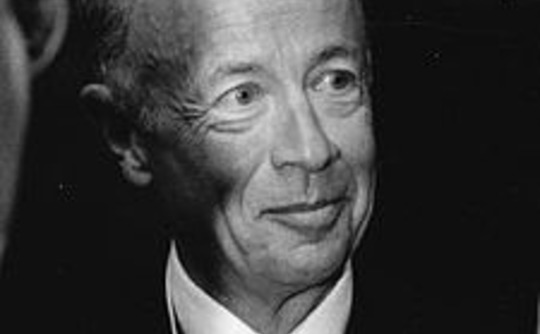While Twitter celebrated its tenth anniversary last week, the world said goodbye to a man without whom it would never have been possible. Former Intel CEO Andy Grove, who built this early Silicon Valley business into the powerhouse it is today, died last week aged 79.
“The man who put Intel inside, “as The Economist so neatly summed up – using its most famous marketing phrase – was the first person hired in 1968 when Intel was a then unknown maker of memory chips for the massive IBM mainframes of the day.
After Japanese chip manufacturers took an early lead in the 1970s, Grove help switch the company to making microprocessors. It was not an easy process, as Intel’s first attempts were dismal failures. But it was Grove’s repeated successes against adversity that would make Intel – and him – among the greats of business.
His hard-driving business style would become known as “creative confrontation” and his famous quote that “only the paranoid survive” would becoming his defining maxim.
“Grove helped midwife the semiconductor revolution – the use of increasingly sophisticated chips to power computers – that proved to be as momentous for economic and social development as hydrocarbon fuels, electricity and telephones were in earlier eras,” the New York Times wrote in its obituary last week.
Time magazine called him “the person most responsible for the amazing growth in the power and the innovative potential of microchips,” when it named him 1997 Man of the Year.
Grove’s rags-to-riches life story is the stuff of legend. Born Andris Istvan Grof, he renamed himself Andrew Stephen Grove when he arrived in the United States in 1956, after the Soviets invaded his native Hungary. Suffering from chronic hearing loss, caused by scarlet fever as a child, that required bulky hearing aids – which he was notorious for banging on boardroom tables when verbose underlings spoke for too long – it took innumerable operations to repair his hearing. He also battled prostate cancer and was diagnosed with Parkinson’s disease in 2000.
He studied chemical engineering, and later a PhD, and struggled his way through lectures by learning to lip read and checking his notes with an English dictionary.
“His character traits are emblematic of this amazing century: a paranoia bred from his having been a refugee from the Nazis and then the Communists; an entrepreneurial optimism instilled as an immigrant to a land brimming with freedom and opportunity; and a sharpness tinged with arrogance that comes from being a brilliant mind on the front line of a revolution,” wrote Time.
Interestingly the profile was written by Walter Isaacson, who would write the biography of Apple co-founder Steve Jobs, the other Silicon Valley icon that Grove is always associated with. And, in many ways, he enable the success stories that Apple and Microsoft would become.
Intel worked closely with Microsoft in a partnership that dominated the desktop PC era of the 1990s – their duopoly would be called “Wintel” and be fraught with anticompetitive misbehaviour. Grove, by then the CEO, turned the chipmaker into as big a brand as the computers it powered. This was in no small part through a massive marketing budget Intel afforded PC makers as long as they included the now famous “Intel Inside” phrase in all adverts and on the computer itself. It also spurned the so-called microprocessor myth, a favourite of computer salespeople convincing buyers that a faster chip would solve their problems.
My favourite quote of Grove’s is a clear understanding of how human nature bestows undue praise or condemnation on tech: “Technology happens. It’s not good, it’s not bad. Is steel good or bad?”
As is now fitting in the social media age, Microsoft founder Bill Gates tweeted : “I’m sad …. I loved working with him. He was one of the great business leaders of the 20th century.”
